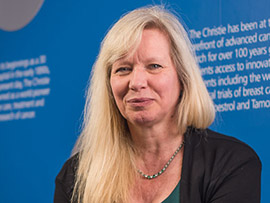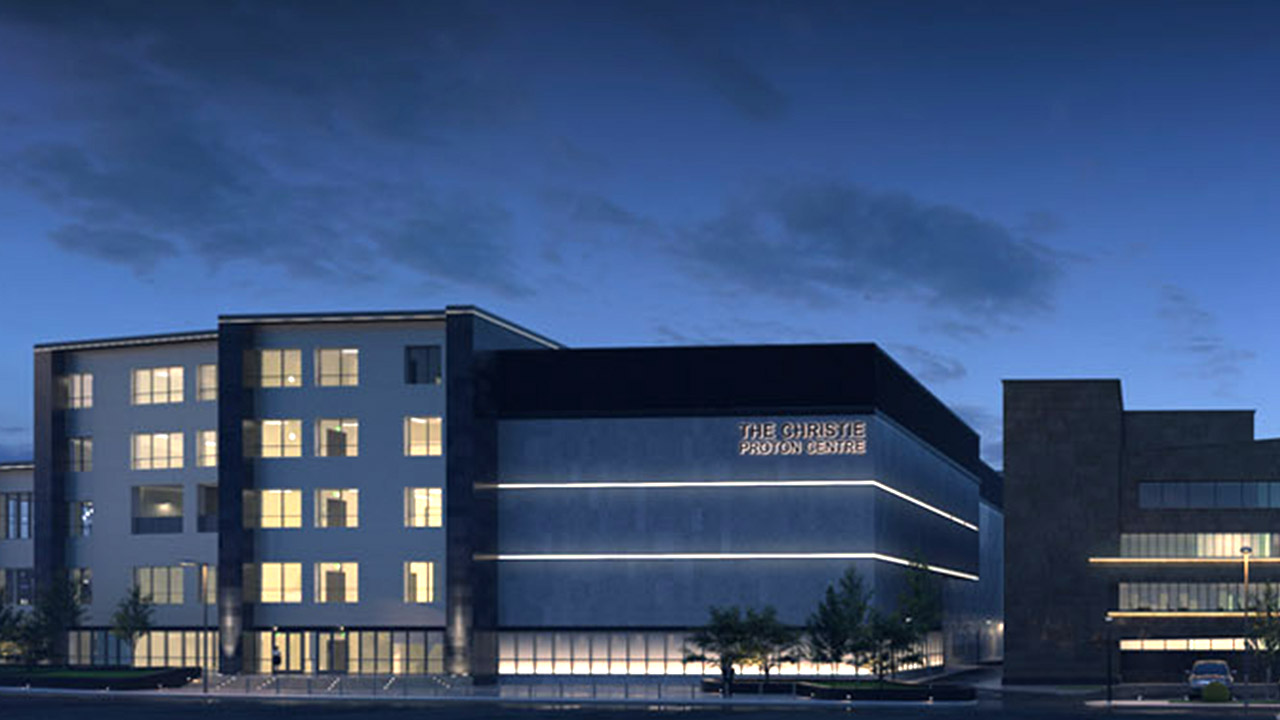Manchester’s place in tomorrow’s world
Professor Karen Kirkby, Director of the UK’s first proton beam and research centre, outlines how Manchester is pioneering ground-breaking research into the next generation of cancer challenges. The NHS funded clinical proton beam treatment and research facility at The Christie treated its first patients in December 2018.

With more people surviving cancer than ever before, a new challenge for the research community has emerged; the need to find out how we can minimise the side effects of treatments to ensure survivors live long and healthy lives without fear of reoccurrence and tissue damage caused by treatment. Put simply, we need to provide safe but effective treatment.
Traditional radiotherapy treatment is effective but it’s also damaging because of the impact it can have on healthy tissue, especially in children who, naturally being smaller and younger, are more susceptible to tissue damage from ionising radiation.
For example, take a child treated at age six who, once treatment is over, has their whole lifetime ahead of them. They should be able to be free from the worry of developing a second cancer.
If we want to ensure that these survivors enjoy a quality of life and don’t require future interventions and ongoing care, we need to identify how to minimise tissue damage by better targeting our treatment - hitting the diseased area and not touching healthy tissue. This is where proton beam therapy can provide a solution.
Proton beam therapy allows us to specify the exit point for the beam, meaning that the beam stops where we tell it to and it doesn’t continue onwards, penetrating other sensitive neighbouring organs.
“We’ve already had requests from international research groups wanting to collaborate with us as we’re seen as international leaders in proton beam therapy and because of our links with The Christie and the University, both of which have world leading reputations.”
Rising to the challenges
Manchester’s forward thinking approach to cancer research has seen us become the only place in the UK to build a dedicated proton beam research and treatment facility in one centre. Our collective ability to recognise this global challenge led to us identifying the need for more research and being awarded the funding to carry this out on a single site. This state-of-the-art facility pioneers new methods and technologies that will ultimately allow us to be more precise in using the beam in treatment, ensuring less tissue damage and driving our ambition to become world-leading in both treatment and research. Our first patients were treated in late 2018, with the research facility opening shortly
Research and treatment together
Our purpose-built research room will be alongside three clinical gantries, each in their own treatment room. These gantries will enable the beam to move at different angles so that they miss key healthy organs. Protons travel at the speed of light, so huge gantries are needed (ours weigh 90 tonnes). Most other systems don’t have this degree of motion so this is genuinely pioneering.
We aim to make this a world-leading proton treatment and research centre and we’re already well on the way. We’re installing the newest technology available including the fastest spot scanning system in existence.

Professor Karen Kirby
Karen Kirkby is Professor of Proton Therapy Physics at The University of Manchester and The Christie NHS Foundation Trust.
Leaders
The Manchester tradition of making things happen and being given the space to try new things out has led to amazing discoveries, including the first programmable computer and more recently graphene. We’re hopeful great things will happen in proton therapy too. We’re lucky to have this facility, which has equipment and tools which we can use to experiment and innovate.
We’ll have dedicated research beam time each night when patients aren’t being treated to look at how the beam behaves. When the treatment has stopped, our research teams will come in and work through the night, trying, testing out and practising new ways of looking at the beam and how to use it. We can watch how the beam behaves in different ways, depending on how it interacts with different cells and tumours.
Collaborators
I haven’t been in Manchester that long compared to some of my peers but what has struck me in this relatively short period of time is that people here really do work together and because of this, we can undertake truly multidisciplinary research. There are unique partnerships between the University, The Christie and the Cancer Research UK Manchester Institute. You can move seamlessly between all these institutions and access brilliance in different disciplines, whether it’s clinical expertise, clinical medical physics, translational radiobiology, maths, physics, economics or basic science.
We can ask colleagues different questions and get the answers because our experts want to help and we’re not limited to any small number of areas we can explore. For example, we’re engaging with social and health scientists to explore how patients respond, before and after treatment. We also engage with patient groups to understand how we can help to improve their experience of treatment as it is really important that we get this right.
Protons are coming home
Manchester’s research community never stands still, it’s always seeking out the next challenges and I like to consider myself part of this, as we don’t stand still either. My research teams and I are looking at how we can optimise personalisation in order to see how and where we can help.
Along with Dr Martin McCabe we’re currently looking at medulloblastoma, a brain tumour in children, to see how we can optimise the treatments to the different sub-types of this disease. Traditionally some types of medulloblastoma are immensely difficult to treat and have a poor prognosis. But, by understanding the different genetic sub-types, we can better personalise the treatment which could lead to better outcomes and fewer neurocognitive side effects.
I know that we don’t have all the answers yet; to this or the other research questions we’re looking at. But I do know that, by enabling our research and treatment to take place side by side, we stand the best chance of getting them.
The Proton Beam Therapy Centre at The Christie will host a £125 million NHS-funded research portfolio.
Thanks to the generosity of donors, The Christie Charity has given £5.6 million for the creation of a research lab next to the clinical facility.
Manchester will be the first treatment centre in the UK to combine these two facilities for the benefit of patients.

Manchester’s pioneering proton beam research is making us world leaders in radiotherapy treatment and research.
